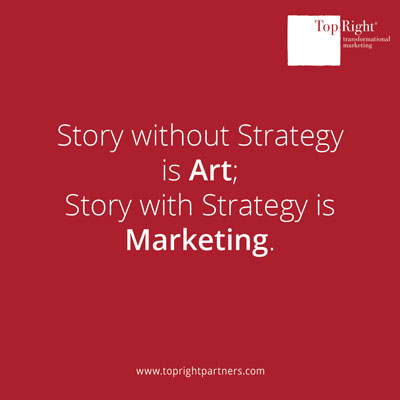Simply put, happy customers do not necessarily equate to a profitable business. If you’re relying on traditional customer satisfaction surveys to track and improve your performance, it’s almost guaranteed that you will not learn enough to make meaningful changes that will impact your business and bottom line. In previous writings on this subject, we offered up a few tricks for analyzing both structured satisfaction data and unstructured (i.e. open-ended questions) data to reveal actionable insights to enhance customer experience.
However, that’s not sufficient.
You need a disciplined strategy in place that’s going to walk you through the exact process for engaging your customers with your brand story at the right time and in the right place. It’ll take work to put the right frame of thinking in place, but it’s worth it. And just when you think that you’ve figured it out, it will be time to adapt and adjust again. Jim Blasingame, the author of The Age of the Customer and host of syndicated radio program Small Business Advocate recently pointed this out.
“Every Seller must ask themselves this question every day: How can we continually adjust to changes in customer expectations in order to stay relevant to them?”
— Jim Blasingame
Here are 4 tips on how to prepare for the “moment of relevance.”
1. Start with the Mind of Your Target Audience
At the center of your Brand Story and strategy is the customer, and it is your responsibility to understand their wants, needs, and desires to mold their journey and engagement with your brand. You can’t guess what your customers want based on some generic customer satisfaction index. You must ask them. Do the homework, conduct the primary research, generate insights, and reveal the gaps. Then, initiate a plan to help your team get into action and close those gaps. At TopRight, we perform customer needs analysis, and reveal stated vs derived importance to discern between what customers “say” they want versus what they actually “do”. Your story must be simple, clear, and aligned with your audience’s needs and wants. It must resonate with your audience in such a way that he or she wants to be a part of your brand story.
2. Meet them Where They Are and on Their Terms
Once you have your story, you need to make sure it reaches your customers – in formats that they consume and through channels that they use, across every touchpoint. With all of the noise in the market today, you’ll need to leverage thought leaders, influential people, and referring websites to stand out from the crowd.
This part of the strategy goes well beyond traditional PR and uses links to help build authority for your site, so you rank better in search. The focus here is on the quality of where your website is linked and who’s seeing it. You’ll receive referrals from other highly ranked websites, enjoy more exposure, and receive a higher credibility factor. Working with a company offering digital PR services is a proven way to tell your story to the right customers at the right time.
3. Shift From Campaigns to Conversations
Marketing can take advantage of the immediacy and the reach of social media to communicate with our audience continuously and meaningfully, targeting our message by media type and inviting the recipients of that message to engage with us and respond. Marketing was never intended to be a one–way street. Think about your marketing strategy as simply having a conversation with your customers. It’s easy to play the guessing game on what they might want to talk about and blast out messages, but it’s much more productive to hear directly from your target audience and then respond appropriately.
Engaging in a conversation with individuals will get you much further than an email blast to everyone with whom you’ve ever done business. The biggest challenge is making time for this type of interaction. Build it into your marketing strategy, so you’re certain to have these critical conversations and keep your finger on the pulse of the customer.
4. Convert Customers to Advocates
After you close the deal, customers seek not just satisfaction, but innovation, communication, and support. What are the latest service and product updates? Are my questions being answered? What do I need to know to stay ahead of industry trends and best practices? A big part of your strategy should be focused on turning your happy, satisfied, and loyal customers into brand advocates. Keep customers coming back by providing outstanding customer service, excellent products, and reasons why they should continue being a customer. Impress them so much that they want to tell their friends and family about you. Better yet, give them the tools to tell your story for you. If you give them a way to make themselves the hero of the story – they’ll tell it many times over! And at that stage, you will have transformed a customer into a brand advocate who will spread the good news about you.

In order to practice Transformational Marketing, you must establish a clear Strategy to tell a simple, clear and aligned Story to the right person, at the right time, through the proper channels.
To learn more about how you can bring simplicity, clarity, and alignment to your brand’s Story, Strategy, and Systems check out our latest ebook: Transformational Marketing: Moving to the TopRight.
Photo credit: Flickr

